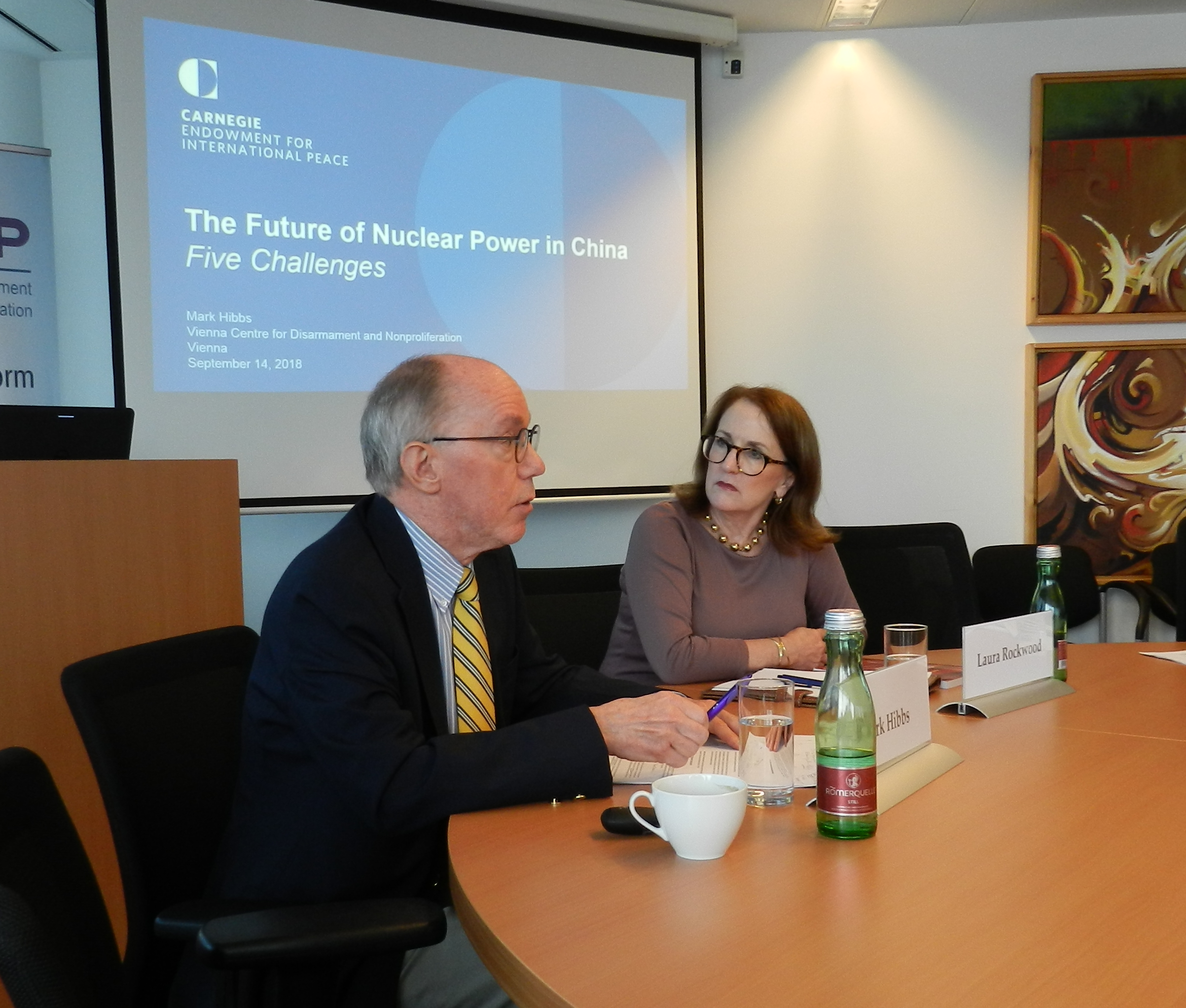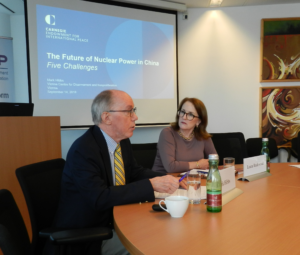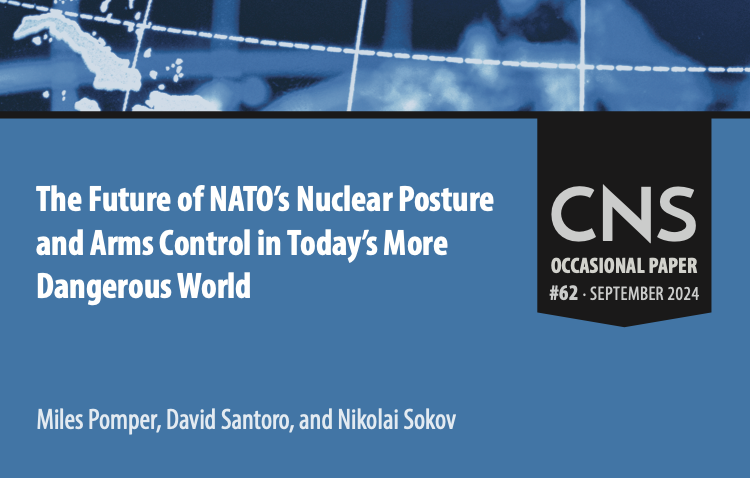
China is on course to lead the world in the development and deployment of nuclear technology for power generation by 2030 and beyond. If so, the country may take command in areas that are strategic and globally significant, affecting technology choice, nuclear safety, nuclear security, non-proliferation, climate mitigation, electricity policy, international trade and multilateral governance. But in a new report published by the Carnegie Endowment, The Future of Nuclear Power in China, author Mark Hibbs explains that a world-leading nuclear China is not a foregone conclusion. Assumptions that seemed valid when Beijing dramatically accelerated its nuclear deployments in the early 2000s–about future global expansion of nuclear power, nuclear technology development, electricity demand and economic growth, and political and project risk – are today less certain. If China succeeds in transitioning to more advanced nuclear fission systems, that will raise the profile of nuclear power worldwide; if not, China will instead reinforce the view that advanced reactors with closed fuel cycles are too expensive, risky and complex to generate increasingly more of the world’s electric power.
On 14 September 2018, Mr. Hibbs presented some of the findings of his report during a seminar at the VCDNP, moderated by VCDNP Executive Director Laura Rockwood. During Mr. Hibbs’ presentation, he briefly discussed the evolution of the Chinese nuclear energy programme, identified five challenges to the continued development of nuclear energy in China and offered possible boundary scenarios for the future of nuclear energy in the Chinese energy market.

The early 2000s were a decisive period for nuclear energy in China. Before this period, leaders had built a handful of nuclear power plants with foreign assistance but placed more emphasis on longstanding energy sources, chiefly coal. Faced with a serious energy crisis in 2002, China resolved to jumpstart its nuclear energy programme, citing expert opinion at the time that both GDP and electricity demand would increase at approximately 10 percent per year. This decision was a short-term reaction to a crisis that was self-inflicted, but long-term strategic thinking predominated. Mr. Hibbs classified the strategic drivers for this thinking as follows: (1) secure long term energy supply, in terms of a century or longer; (2) domestic resource management; (3) atmospheric pollution reduction; (4) technology policy objectives; (5) maintaining national defense assets; and (6) intellectual property control and exports. In the future (7) climate change mitigation may be a policy driver for nuclear energy.
However, nuclear was only one of several options for energy production and it was by no means the cheapest. The cheapest option was coal; China is responsible for half of the Earth’s coal consumption for electrical energy production. With the above strategic drivers in mind, Chinese leadership took a number of steps to promote nuclear energy’s growing role in the domestic energy market. Some of these steps included leveraging political access of state-owned enterprises (SOE), State financing, State control over pricing and dispatching rules for power sources, including a favorable benchmark off-take price for nuclear power compared to coal which generates two-thirds of China’s power.
Moving forward, Mr. Hibbs sees five challenges to the future development and deployment of nuclear energy in China: (1) technology development; (2) the aftermath of Fukushima; (3) electricity policy; (4) “new normal” conditions; and (5) risk assessment and management.
Mr. Hibbs also indicated an overarching contradiction in the Chinese electricity policy debate. On one hand, Chinese leadership has been advocating and in some cases implementing market-based reforms. But on the other hand, it has also continued to maintain the dominant position of the state-owned sector. Transparency reforms and provincial government pressures have resulted in some market-based pricing and dispatching, and grid innovation is leading to the breakdown of technical and political barriers inhibiting competition.
Mr. Hibbs did not offer predictions on the future of nuclear energy in China. Instead, he concluded by offering two broad, possible boundary scenarios for China’s nuclear development through 2050:
Nuclear energy prevails in China: Chinese strategic aims for nuclear power may prevail, backed by increased government support and subsidies. This outcome would include an aggressive de-carbonization policy, sufficient infrastructure for good safety and security, an institutional nuclear exception to deepening power market reforms, relief to the nuclear sector from reduced domestic growth and State protection for nuclear research and development to advance national security.
Nuclear energy stalls or fails in China: Conversely, political will and technical progress could be insufficient to permit transitioning to advanced nuclear systems. The Chinese State could fail to prevent market forces from overtaking the entire electricity sector and China’s nuclear industry could lose its comparative cost advantage. Innovations in non-nuclear technologies might discourage investors from remaining committed to nuclear power.

